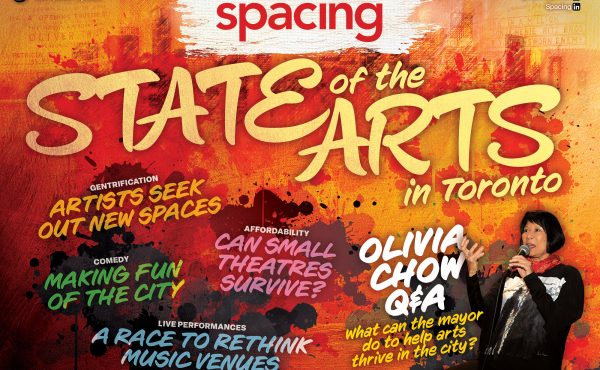This past month saw a seminal moment in a growing movement for a better Canadian urbanism. In Halifax at the 5th annual Summit of the Council for Canadian Urbanism or “CanU,” the Board ratified, & summit-ers had the honour of being the first to sign, our Charter for Canadian Urbanism! This moment, which many signers described as “giving them goosebumps,” was actually at least 5 years in coming.
In 2009, CanU went from almost 10 years as a movement held together by true believers (many of which also happened to be some of the most influential urbanists in Canada), to an actual legal entity. Our first annual Summit of leading Canadian urbanists in 2009, #CanU1 in Toronto, saw the first presentation of our draft Charter. The discussion that ensued on the draft wording suggested to the Board that we still had work to do to define ourselves, and our mission and purpose, before the Charter could be finalized and signed.
So we embraced the draft-ness of the Charter, and kept the conversation going about who we are and what our mission is, with each consecutive Summit (CanU2 in Montreal, CanU3 in Vancouver, CanU4 in Calgary, and this year’s CanU5 in Halifax). We took our time. As the Halifax Summit came together under the supervision of CanU VP and Summit host Andy Fillmore, our Board decided we were ready to look at the Charter with fresh eyes. But were we ready to ratify it?
What we found was that much of the draft text had grown with us, and on us, over time, and felt right with the perspective that came with the intervening years. And the wording changes we needed – well, most of those were now obvious to us too. It gave me great comfort as the lead author for our National Board to see the common thinking and agreement on how the wording should evolve – we all know how “writing by committee” can sometimes be! But agreement came reasonably fast after 5 years of maturation… except for a fascinating debate about the word “sprawl!” But I’ll come back to that.
So now our Charter is live! It includes a simple mission:
‘The Council for Canadian Urbanism is dedicated to improving city-building practices, research, and education in order to create more sustainable, healthy and livable cities and communities across Canada.”
It also states who we are as a movement and organization, and shares our common beliefs, principles and objectives as multi-disciplinary urbanists across Canada. It explains that while CanU initially emphasized “urban design and physical city-building leadership within city governments, the private sector, the community sector and academia, CanU continues to evolve to encompass all aspects of successful city-making.”
Framed as a call to action and intended to inspire, the Charter makes it clear that a new city-building model is needed in Canada:
“Canadian cities must implement a consistent and persuasive new urban model, with corresponding approaches, standards and tools. This model is based on complete, compact, mixed-use, inter-connected, and vibrant neighbourhoods that prioritize sustainable and healthy mobility choices – walking, biking and transit. This new model will replace the unsustainable, use-separated, low-density, car-oriented model of the past.”
And our debate about the word “sprawl?” It was about this:
“Canada is increasingly both an urban and suburban society. Within our special context, we have built some of the world’s most livable cities and have pioneered smarter suburbs, but we have also built costly and unsustainable urban sprawl. The success or failure of Canada depends on the success of our cities and communities.”
Our initial debate on this wording reflected the troubling truth that the term “sprawl,” like other controversial words such as “density,” “expert” and “regulation,” has become controversial and polarizing in many parts of the Country, such that they are virtually taboo! Many urbanists don’t want to use them anymore, and struggle to find alternative words. When this happens, something honest and valuable gets lost from the discussion.
Ultimately, our Board decided to embrace the use of this challenging word, and the challenging discussion it can facilitate. Using the word allows us to discuss the difference between suburb and sprawl – an important part of our mission, and our value. Improving Canadian urbanism starts with candid and constructive discussions about our cities, regions and communities right across Canada – and CanU must be bold in our support of those discussions.
As we reminded our delegates at the Halifax Summit, ours is not a membership service organization – it’s a movement, for a better, healthier, more sustainable and resilient urbanism coast-to-coast. With the ratification of our Charter, that movement kicks into higher gear. We hope you’ll read the Charter, join many of Canada’s leading urbanists by becoming a member of CanU, and get involved. We’re all in this together!
Photo by Taber Andrew Bain
Brent Toderian is the founding President of the Council for Canadian Urbanism, a regular contributor with Spacing, the President of TODERIAN UrbanWORKS, and the former Chief Planner for Vancouver. Follow him on Twitter @BrentToderian.



